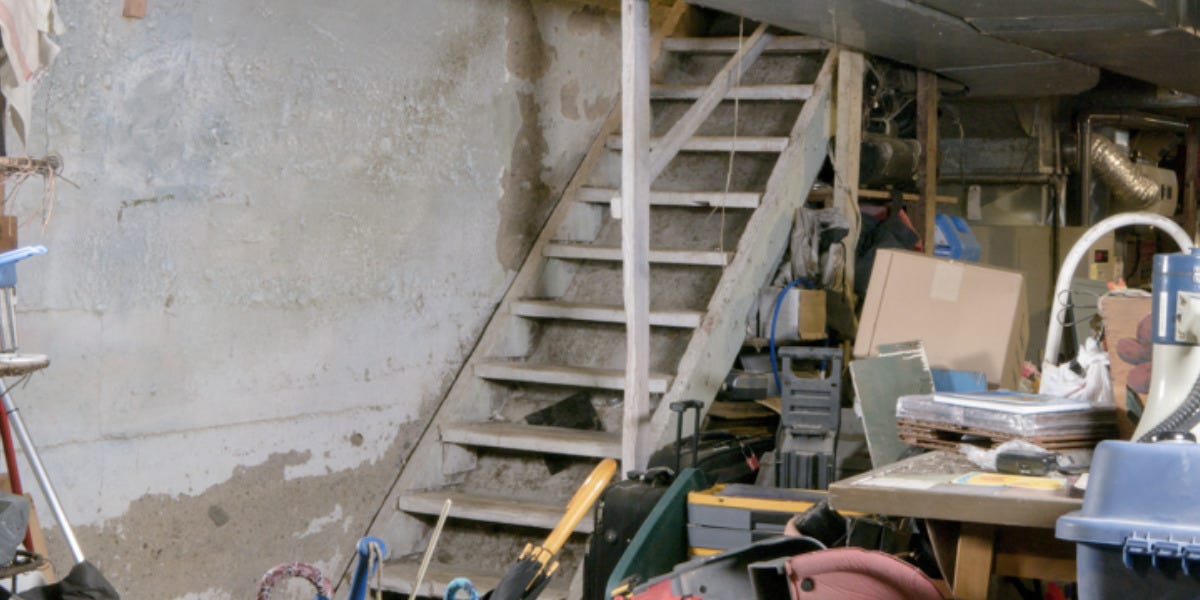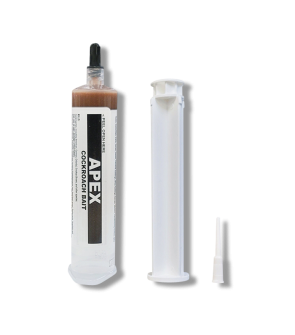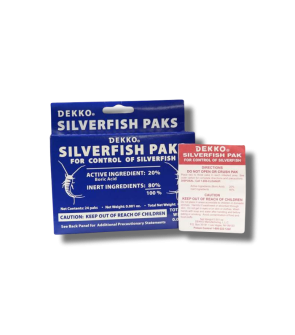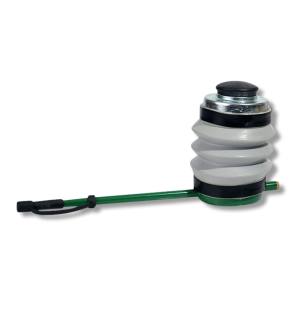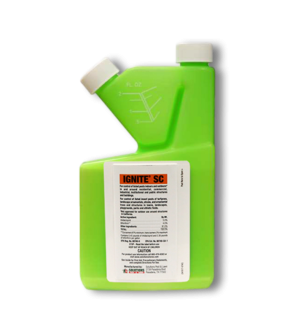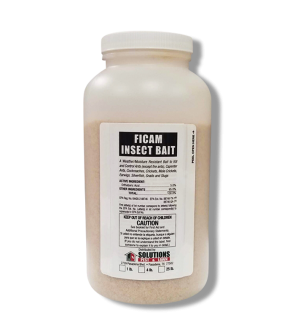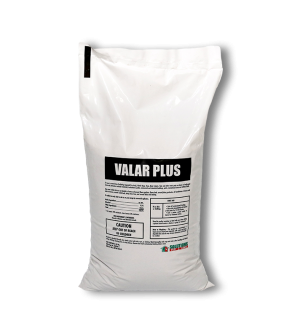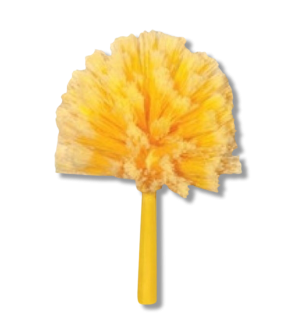Insects in Basement
Most Effective Products
Common Insects in Basements
Basements have a reputation of being naturally scary and unwelcoming, but even more so when unwanted insects are crawling around. Bugs like centipedes, cockroaches, spiders, silverfish, earwigs, millipedes, and pillbugs are the most appreciative of the privacy and conditions offered in your basement.
Even if you do not see these pests, they are most likely present. Most insects tend to hide as soon as the light is flicked on in, but you can understand which pest is infesting your basement with this DIY guide.
Understanding why these insects have infested your home's basement and having some ideas of how to get rid of them can help you face these pests head on. If you are not seeing any of the pests you have read here, then contact our customer service team by phone or email for professional tips, so you spend more time in your basement without stress or worry.
Centipedes
While centipedes are predator pests that hunt other insects with their venom, they are not actually dangerous or poisonous to people. They are mostly a nuisance with their traveling activities, but beware they can bite people if provoked.
Identification

Centipedes are elongated segmented arthropods with 30 to 300 pairs of legs. They generally have light brown to yellow colored bodies with a pair of poison claws behind their head to paralyze their prey.
Inspection

Treatment
Step 1: Reduce Moisture
 Centipedes require moist habitats. If you are seeing a lot of centipedes this may suggest an underlying moisture problem in the basement that should be corrected.
Centipedes require moist habitats. If you are seeing a lot of centipedes this may suggest an underlying moisture problem in the basement that should be corrected.
First, seal all crevices and cracks around window frames in the basement as this is one of the most common ways for this pest to travel. Go ahead and seal openings around plumbing and other voids in walls with caulk.
Clean up puddles and condensation and fix plumbing leaks as well to drive centipedes away.
Excessive moisture in your basements may need to corrected with a dehumidifier.
Step 2: Remove Clutter
 Reducing clutter in basements will limit these nocturnal pests' ability to hide during the day. We recommend switching out all cardboard boxes with sealable plastic containers to prevent centipedes from making a home.
Reducing clutter in basements will limit these nocturnal pests' ability to hide during the day. We recommend switching out all cardboard boxes with sealable plastic containers to prevent centipedes from making a home.
Store firewood off the ground or move it outside away from your home's foundation on a metal stand. Restack the pile with the oldest wood on top to make it easier to burn and limit pest activity.
Step 3: Spray Supreme IT
To reduce centipedes in your home's basement, you will need to treat all cracks, crevices, and dark corners with a residual insecticide like Supreme IT.
Supreme IT is a broad-spectrum insecticide designed to eliminate over 70 insects, including centipedes in and around your home for up to 90 days. This product will need to be mixed with water so we recommend using a handheld pump sprayer for easy applications.
Determine how much Supreme IT to use by measuring the square footage of the treatment area. To do this, measure the length and width of the treatment area in feet then multiply them together (length X width = square footage).
Apply 0.33 to 1 fl. oz. of Supreme IT in 1 gallon of water per 1,000 sq. ft. Once mixed, treat all cracks and crevices along baseboards, corners, storage areas, around water pipes, cabinets, sinks, underside of shelves and behind and under refrigerators in the basement.
Keep people and pets out of treated areas until the spray has completely dried.
After application, centipedes and pests they hunt for food will be eliminated within several hours after contacting treated surfaces.
Cockroaches
Cockroaches are one of the most adaptive creatures that can become a problem for any basement owner. They are known carriers for disease and can damage personal belongings, foods, cause allergies, and greatly increase in population size in a short time frame.
American cockroaches and oriental cockroaches love basements, especially if they are dark, damp, and not often used.
Identification
For a physical identiciation: On the left is the American cockroach and on the left is the Oriental cockroach.
American cockroaches have reddish brown colored bodies and a yellow band behind their heads and at the edge of its thorax. Both males and females are fully winged and can fly short distances.
Their most distinguishing characteristic is their large size, measuring approximately 1.5 inches or more in length.
The oriental cockroach has a shiny, dark brown to black colored body with a length of 1.25 inches for the female species and 1 inch for the male.
Female oriental cockroaches have small wings with broader, and heavier bodies. Males have wings that cover only three-quarters of their bodies. Despite these wings, both the male and female are unable to fly.
Inspection

Oriental cockroaches favorite spots to hide in basements are around cluttered spaces like boxes, around plumbing, toilets, radiators, and service ducts. Moisture in walls and air conditioning ducts can also be ideal hiding spots for this pest.
Treatment
Step 1: Clean Home

Repair all leaky pipes, and clean-up all condensation or water puddles indoors. Direct any outside rain gutters away from your foundation to decrease potential moisture issues in and around basement walls.
Store all exposed food in airtight plastic containers to limit food attractants. Dispose of trash in an outdoor trash can that is several feet from the home's foundation.
Step 2: Bait Entry Points
Since American cockroaches and oriental cockroaches travel and hide in tight spaces, baiting the voids is very beneficial.
Treat these openings, cracks, and crevices with a gel bait like Apex Cockroach Gel Bait, which contains 11 different attracts to lure and kill these cockroaches.
As a bait, it will work even greater with fewer food competitions so be sure to do what was done in the previous step.
Keep in mind that cleaning chemicals will effect this products success so use warm water only to clean crumbs, spills, and grease.
To control American cockroaches and oriental cockroaches, you will need to apply 5 drops or approximately 0.0071 oz. of Apex Cockroach Gel Bait per square yard.
Place the product as a spot or crack and crevice treatment near areas where you have seen roach activity. These areas may be on baseboards, under sinks, countertops, cabinets, and where the pipes penetrate the wall.
Step 3: Exterior Perimeter Treatments
Liquid residual sprays are most beneficial around the exterior foundation of your home. Cockroaches like these often congregate and travel into basements from the outside so applications with Supreme IT will work greatly.
Use 0.33 to 1 fl. oz. of Supreme IT in 1 gallon of water per 1,000 sq. ft. to create a barrier treatment.
Spray 3 feet up and 3 feet out from the foundation of your home, while also spraying around window and door frames, trunks of trees and shrubs near the homes siding, around water pipes, and any other cracks and crevices in the foundation.
Earwigs
Despite their reputation, earwigs are more harmful to plants than people. While earwigs are not likely to enter a person's ear, they can bite or pinch your skin if they feel threatened.
These non-venomous pests are more than likely to be the insect you hate to see inside your house due to their irritating presence. While there is no threat of destruction to your basement they can pose a risk to any indoor plants.
Identification
Earwigs have elongated flat bodies that are slender shaped with a reddish brown coloration. These pests also measure .5 to 2 cm in length and have a 2 antennae, six legs, and 3 body parts.
They are most easily recognized by their pincher pair at the tip of their abdomen.
Inspection
Earwigs are mainly nocturnal pests that travel about in the night and prefer to hide in woodpiles, beneath floors, in boxes, and in cracks and crevices within dark, damp areas.
Treatment
Step 1: Remove Excessive Moisture

Repairing leaking plumbing, cleaning up condensation and water from the floor and walls, and leaving fans on in basements are options to consider.
Setting up a dehumidifier in the basement can help to further vent out the air in your basement.
Step 2: Utilize Boric Acid Baits

Fill in cracks and crevices and apply along walls and baseboards in attics with Ficam Insect Bait. To treat voids, you will need to use a bulb duster.
You may also treat behind any electrical outlets in basements, but be sure to shut off power to them before application.
Step 3: Create An Perimeter Barrier
Effective earwig control in basements will be increased with outdoor barrier treatments around the home with a residual insecticide. Use insecticides such as Supreme IT during dry weather periods or in the fall.
Spray 0.33 to 1 fl. oz. of Supreme IT in 1 gallon of water per 1,000 sq. ft. Treat 3 feet up the structure and 3 feet out from the foundation on the ground.
Be sure to spray cracks and crevices in the foundation, around window and door frames, and where plumbing penetrates the wall.
Millipedes
Although millipedes do not bite or cause structural damages, they can secrete a foul liquid resulting in itching or burning of the skin and other allergic reactions.
Their mere presence can be a nuisance indoors as they often invade in large numbers.
Identification
Millipedes are long, slow-moving, worm-like pests with numerous pairs of legs. They should not be confused with centipedes, which have one set of legs per body segment on the side of their body whereas millipedes have two pairs directly underneath their body.
Depending on the species, these pests vary between gray, brown, black, red, and white and are 0.5 to 2 inches long.
Inspection
Around a basement, millipedes like to hide underneath boxes and furniture. Generally, these pests hide under any objects that provide darkness and dampness.
Treatment
Step 1: Remove Hiding Places
Millipedes are attracted to decaying matter and moisture, so removing cardboard boxes and replacing rotten wood in the basement can help to quickly decrease numbers.
Store all items in a sealable plastic container then dispose of the box and wood in an outdoor trash can that is several feet away from your home's foundation.
Address any other moisture issues occurring in your basement whether that be repairing leaky plumbing, wiping off condensation from windows, floors, or walls.
You may also consider installing a dehumidifier to further control these moisture levels.
Seal up all voids, cracks and crevices in and around your basement with caulk since these pests can crawl up walls easily.
Step 2: Spray Supreme IT
Once your basement is dry, you will then need to minimize millipede activity by treating all indoor cracks, crevices, and gaps then performing an exterior barrier treatment with Supreme IT.
To get rid of millipedes in basements and create a perimeter barrier against them on the outside of your home, use 1 fl. oz. of Supreme IT in 1 gallon of water per 1,000 sq. ft.
Treat cracks, crevices, and voids areas on baseboards, walls, corners of rooms, and around window and door frames, sinks, and pipes and in storage areas of the basement.
For exterior perimeter barrier applications, spray 3 feet up on the structure wall and 3 feet out from it on the ground. Be sure to spray around window and door frames, soffits, eaves, pipes, and into cracks and crevices.
We recommend treating ornamentals in and around your yard to limit food sources for this pest. Mix 0.25 to 0.5 fl. oz. of product in 1 gallon of water per 1,000 sq. ft. of ornamentals.
Spray the top and bottom of ornamental leaves until wet, but not the point of runoff.
Step 3: Spread Valar Plus

Not only does this protect your plants from millipedes, but will help to keep them away from your basement.
Valar Plus is an excellent granular insecticide that will control various turf pests, including millipedes for up to 3 months.
Use 2.3 to 4.6 lbs of Valar Plus per 1,000 sq. ft. of lawn.
Load your spreader with the proper amount of product then broadcast half of the granules across your lawn in parallel lines. Spread the other half at a perpendicular angle to cover the space in the middle.
Directly after application, water the granules in with 0.5 inches of water to activate the product.
Pillbugs
While pillbugs are not dangerous to people, they can become a troublesome nuisance in your basement since they migrate in large numbers.
With enough of these pests, you can see damages to outdoor plants and find several dead pillbugs indoors, making it a real chore for cleaning.
Identification

These gray to brown colored pests have seven legs, one pair of antennae, and measure from ¼ to ¾ inches long. When threatened, pillbugs will curl up into a ball for protection.
Inspection
Typically, pillbugs do not live for very long once they enter a structure unless there are moist or damp conditions allowing it to thrive.
They do not reproduce in basements or homes, but will do so outside close to the foundation under leaves, rocks, logs, moist soil, or other exterior entry points like crevices or gaps.
Pillbugs invade basements from ground level surfaces like windows and door frames, or cracks, crevices, and gaps in walls. If they are found in basements, they will stay close to water sources such as leaky plumbing or along the walls.
Treatment
Step 1: Address Moisture
Any indoor pillbug infestations may indicate water leakage or build-up of condensation in your basement.
First, locate and repair the source of the leakage from where the pipes penetrate the walls, around sinks or washers, and any condensation that occurs in the corners or base of the walls.
Replacing weather-stripping around basement windows and door frames can help with potential water leakage. For extensive moisture issues, you need to install a dehumidifier.
Step 2: Treat Indoor and Outdoor Crevices

For this reason, you will need to treat all cracks, crevices, and voids in and around your basement with Supreme IT. Apply 0.33 to 1 fl. oz. of Supreme IT in a gallon of water per 1,000 sq. ft.
Spray along cracks, crevices, and voids until wet, but not to the point of runoff. While spraying these areas, it’s best to go ahead and create a perimeter treatment around your home to prevent pillbugs from coming into the basement.
To do this, spray 3 feet up on the outside siding of your house and 3 feet out on the ground next to the foundation.
Step 3: Limit Food Sources

Correcting these conditions can begin by spreading Valar Plus across your lawn to deter pillbugs from coming onto your property. Simply spread 4.6 lbs. of Valar Plus per 1,000 sq. ft. of lawn.
Walk at a steady pace to evenly distribute these granules. After making a complete application, water the treated areas with 0.25 inches of water to activate the granules and help the product penetrate the soil.
Next, treat ornamentals with Supreme IT to limit food sources and outdoor habitats for this pest. Use 0.25 to 0.5 fl. oz. of Supreme IT in 1 gallon of water per 1,000 sq. ft.
Spray the top and bottom of ornamental leaves until wet, but not to the point of runoff. Pillbugs that travel or feed on the treated foliage will quickly perish.
Silverfish
Silverfish are not directly harmful to a person’s health, but they can destroy your belongings, infest your food, and leave stains from their waste in areas they hide. All in all, silverfish are not the roommates you are looking for in your basement.
Identification
Silverfish have a shiny metallic gray color, and move like that of a fish giving them their name. They have oblong-shaped bodies with 2 long antennae on their head and 3 long tail appendages at their rear.
Inspection
Silverfish come into basements for the darkness and moisture it readily provides.
They hide from people during the day in protected areas like under or behind furniture, bookshelves, boxes, newspapers or papers kept on ground or in boxes, closets, dry foods, fabrics, clothes, or books stored in basements.
Treatment
Step 1: Control Humidity and Moisture
First thing to do when controlling silverfish in basements is to address any moisture in the basement.
Check the plumbing, where the pipes penetrate the wall, around sinks, rotten wood, and the base or corners of walls. Wipe off any water and make the necessary repairs to stop that leakage.
Replace vents in basements and weather-stripping around window and door frames if needed. For additional measures consider installing a dehumidifier to control humidity levels in basements.
Step 2: Limit Food Sources

Place all items that have not been damaged by silverfish into an airtight plastic container with a closeable lid. All other items that have been previously damaged or wettened should be tossed into an outdoor trashcan.
Best to keep containers and other items that cannot be stored off the ground on a metal stand and away from the basement walls.
Step 3: Treat Indoor Crevices
Silverfish can hide or crawl into a structure through the smallest of openings from cracks, crevices, and voids.
Go through all crevices, cracks, and voids in your basement with a insecticide bait like Ficam Insect Bait. This way, any silverfish you are not seeing can easily be eliminated by ingesting the moisture resistant granules.
Use 4 lbs of Ficam Insect Bait per 1,000 sq. ft.
Dust evenly into inaccessible cracks, crevices, and voids. Also treat along baseboards and walls in basements to get rid of silverfish. Apply only to areas inaccessible to children and pets.
Step 4: Put Out Traps

Dekko Silverfish Packs are ready to use boric acid traps that offer safe control against silverfish in areas where insecticides cannot normally be applied.
Place 2 to 3 Dekko Silverfish Packs per 100 sq. ft. along walls, near areas of previous silverfish activity and in enclosed spaces like closets, bookcases, and other dark hidden spaces in basements.
Replace these products every 3 to 4 months or until trap is ridden with pests after application. Results may not be seen until 3 days to 4 weeks depending on the conditions.
Step 5: Seals Openings
Once you have treated indoors, make sure to seal all cracks, crevices, and voids in your basements and around your foundation with caulk.
Step 6: Spray Outside Perimeter

Once these conditions are cleared, mix 0.33 to 1 fl. Oz. of Supreme IT per gallon of water per 1,000 sq. ft.
Begin spraying 3 feet up the structure and 3 feet out on the ground until wet, but not the point of runoff. Make sure to spray around window and door frames, eaves, soffits, and plumbing penetrations.
Keep children and pets out of treated areas until the spray has completely dried.
Spiders
Spiders can be found anywhere and commonly come into your basement for the bugs, other spiders to mate with, and available protected areas to create their webs.
While their pest control efforts can be appreciated, most homeowners are fearful of coming across common basement spiders like the cellar spider and the funnelweb spider. For good reason too, as the bite from a funnelweb spider can be potentially life threatening and the large webs from cellar spiders are often difficult to remove.
Cellar spiders are not known to be aggressive, but the same cannot be said for the funnelweb spider. For this reason, we recommend wearing the proper personal protective equipment (PPE) like long-sleeved clothing, closed-toed shoes, and gloves to protect yourself against spider bites.
Identification
For visual representation: the cellar spider is on the left and the funnelweb spider is on the right.
Cellar spiders have incredibly long, thin legs covered in hairs that measure out to 1.75 to 2 inches long with their bodies being 0.25 inches long. They have a pale yellow, gray, or brown coloration with two body segments, 8 legs total and 8 eyes.
Funnelweb spiders have a brown or gray coloration and vary in size from 1/5th of an inch to about 3/4th of an inch in body length. These spiders have hairy legs and body parts as well as dark colored markings along their backs and legs.
A key feature of this pest is its finger-like spinnerets at the end of their abdomen to create webs.
Inspection
The spider web on the left belongs to the cellar spider and the one on the right is the funnelweb spider.
Cellar spiders tend to hide in dark, damp basement corners that are away from people and pet activity. Preferably, this pest creates webs in higher elevated corners near other spiders of its species or in the corners of the ceiling.
Funnelweb spiders are aggressive pests that make their webs in the dark corners of basements or among the clutter stored in it.
Treatment
Step 1: Declutter and Organize

Switch out cardboard boxes for sealable plastic containers to limit hiding spaces for spiders and the insects they prey on. Move all containers and objects away from the basement walls and corners to make it harder for spiders to create webs and travel.
Go through all belongings to see what is necessary to create a more open space as the less objects kept in basements discourages spiders from hunting, mating, and spinning webs.
Step 2: Dust

It’s important to knock down all dust and cobwebs in and around objects, the corners of rooms, and other hidden areas with a duster like the JT Eaton Yellow Cobweb Duster Head.
For those cobwebs that are hard to reach, simply attach the duster heat to the Extension Pole Webster.
Step 3: Use Supreme IT
Eliminate cellar spiders and funnelweb spiders in basements by spraying Supreme IT as a crack and crevice treatment or spot application.
Mix 0.33 to 1 fl. oz. of Supreme IT in a gallon of water per 1,000 sq. ft.
To control cellar spiders or funnelweb spiders, spray the upper and lower corners of the room, in eaves, along baseboards, crevices, cracks, and voids, and around window and door frames, water pipes, underside of shelves, and behind and under refrigerators kept in basements.
Step 4: Seal Cracks and Crevices
When you are finished applying insecticides, seal all entry points like cracks, crevices, and voids with caulk so these spiders cannot return or lay eggs in secluded areas.
Treat and repair all openings from around window and door frames, walls, floors, and other unsealed openings. In addition to correcting these issues, it would be best to replace all damaged screens or vents in the basement.
Key Takeaways
What Are The Most Common Bugs in Basements?
- The most common bugs in basements are centipedes, cockroaches, silverfish, earwigs, millipedes, earwigs, pillbugs, and spiders like the cellar spider or funnel web spider.
Do All Basements Have Bugs
- Whether finished or unfinished, all basements are prone to pest infestations. Regular pest control on a quarterly basis as well as outdoor perimeter applications with a residual insecticide is recommended.
Will A Dehumidifier Get Rid of Bugs
- Dehumidifiers help to remove moisture from the air in certain areas that some pests depend on. However, you will need to do additional lawn and general indoor maintenance to fully control pest infestations.
